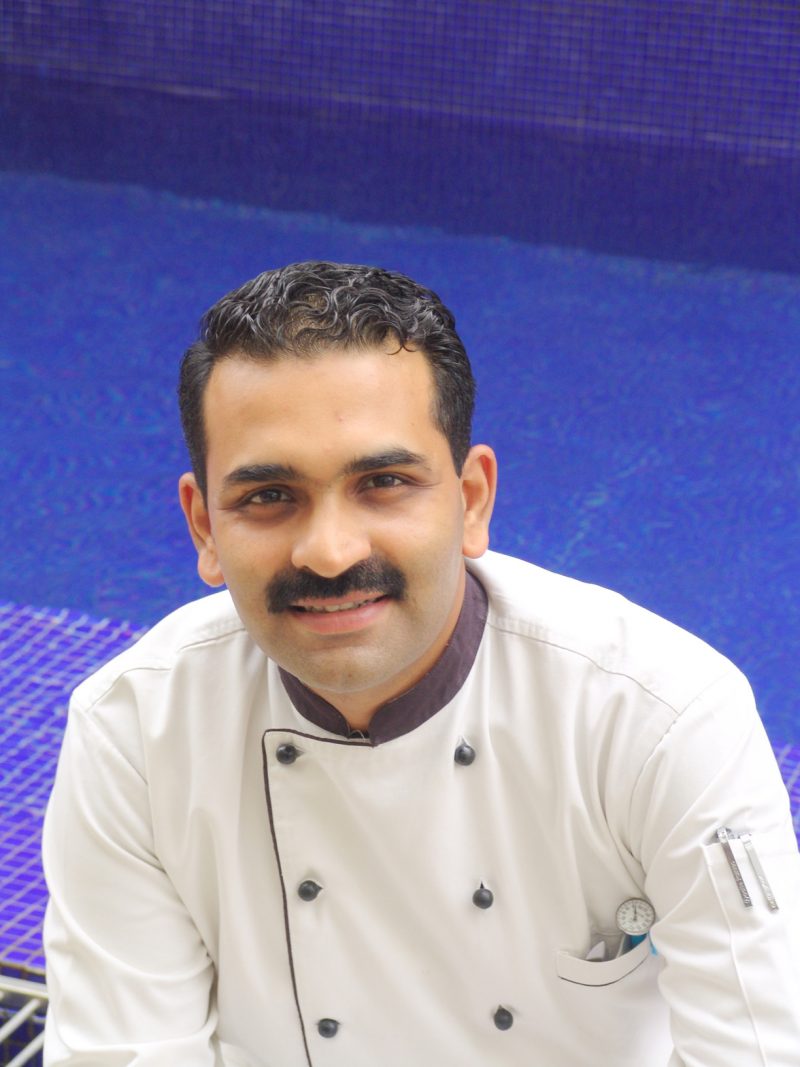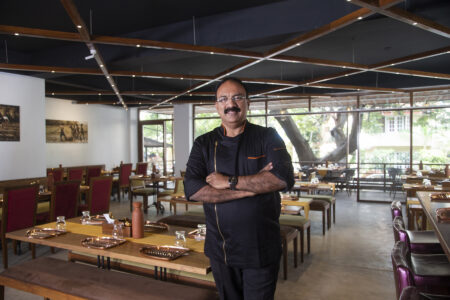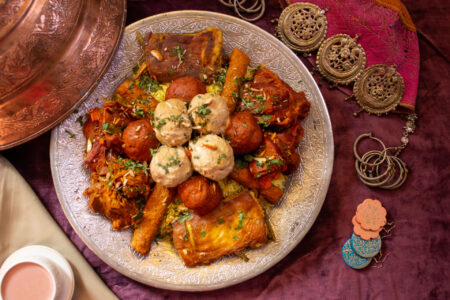In Hyderabad, you collide with history everywhere, especially at mealtimes. Four centuries of recorded traditions, a heady mix of Mughal, Persian, Turkish, Arab Telangana and Andhra influences held by a people immensely proud of their culinary heritage all come together in classic, justly famous dishes, some of them with GI tags. From roadside eateries to stately homes, food has roots that run equally deep and, as Mandaar Sukhtankar, Executive Chef at The Park, Hyderabad explains, all chefs who come here soon realize that innovation is not smiled upon.
So how did he face the challenges of setting up Aish, a fine dining restaurant that serves Hyderabadi and Andhra food? The search for flavours began in the narrow lanes of the old city, trawling dozens of famous small eateries for the best Nihari, Haleem and Kebabs; visiting much sought after caterers and home cooks; getting invited to weddings where professional cooks used age-old recipes for Biryanis, Shikampuri Kebabs and Kormas and finally, after six months of exploring, absorbing and experimenting, the menu was ready.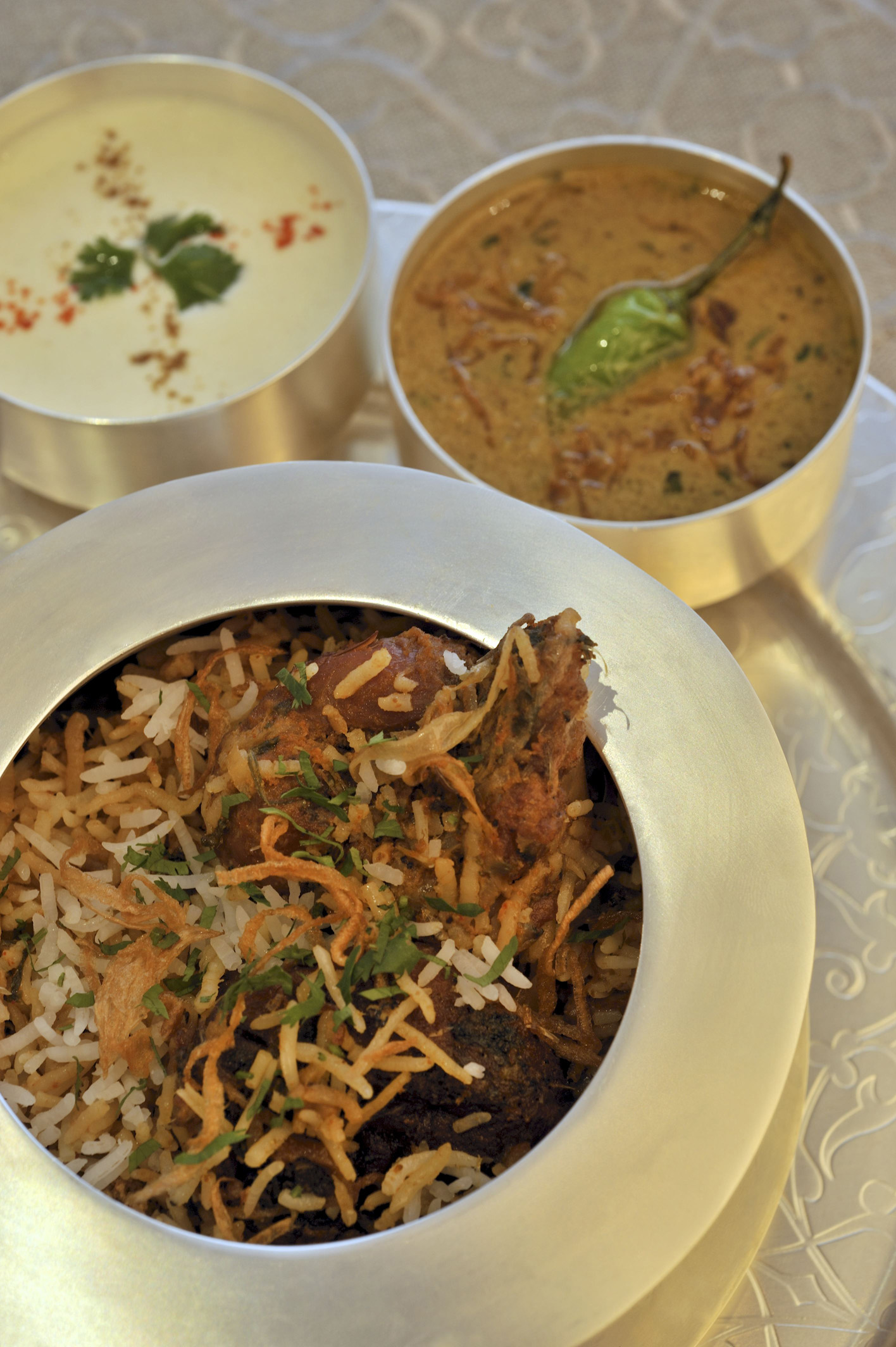
At Aish, the setting is airy and modern, intertwined seamlessly with the baroque mirrors and cut-glass pedestal chandeliers of old Hyderabad. All ivory, beige, silver and mother-of-pearl, everything is mellow, elegant, setting the mood for the menu. The Tarun Tahiliani designed interiors have floors inlaid with subtle shades of mother-of-pearl flowers that look like they have been freshly plucked and scattered across the room. Generations of royalty and beautiful princesses look out at us from the frames of archival photographs that line the walls, as we sample Hyderabadi classics that were created in their kitchens, for gourmets obsessed with food and the exotic.
Our tasting menu has Murgh Mutabbak , chicken, egg and cheese in refined layers; Shikampuri Kebab with its filling of hung yoghurt; Khajoor Paneer ke Dhol, a combination of cottage cheese, spiced date relish and Gongura chutney, they follow each other in a leisurely fashion. Every one of them is characterized by the deep flavours and restrained use of spices of the Hyderabad kitchen.
Mid-meal, we are served an exquisite Murgh Badami Shorba, a pale, delicate, chicken broth with poached, almond stuffed chicken balls. It is so light and refreshing, it brings to mind soups served at Chinese banquets to liven the palate.
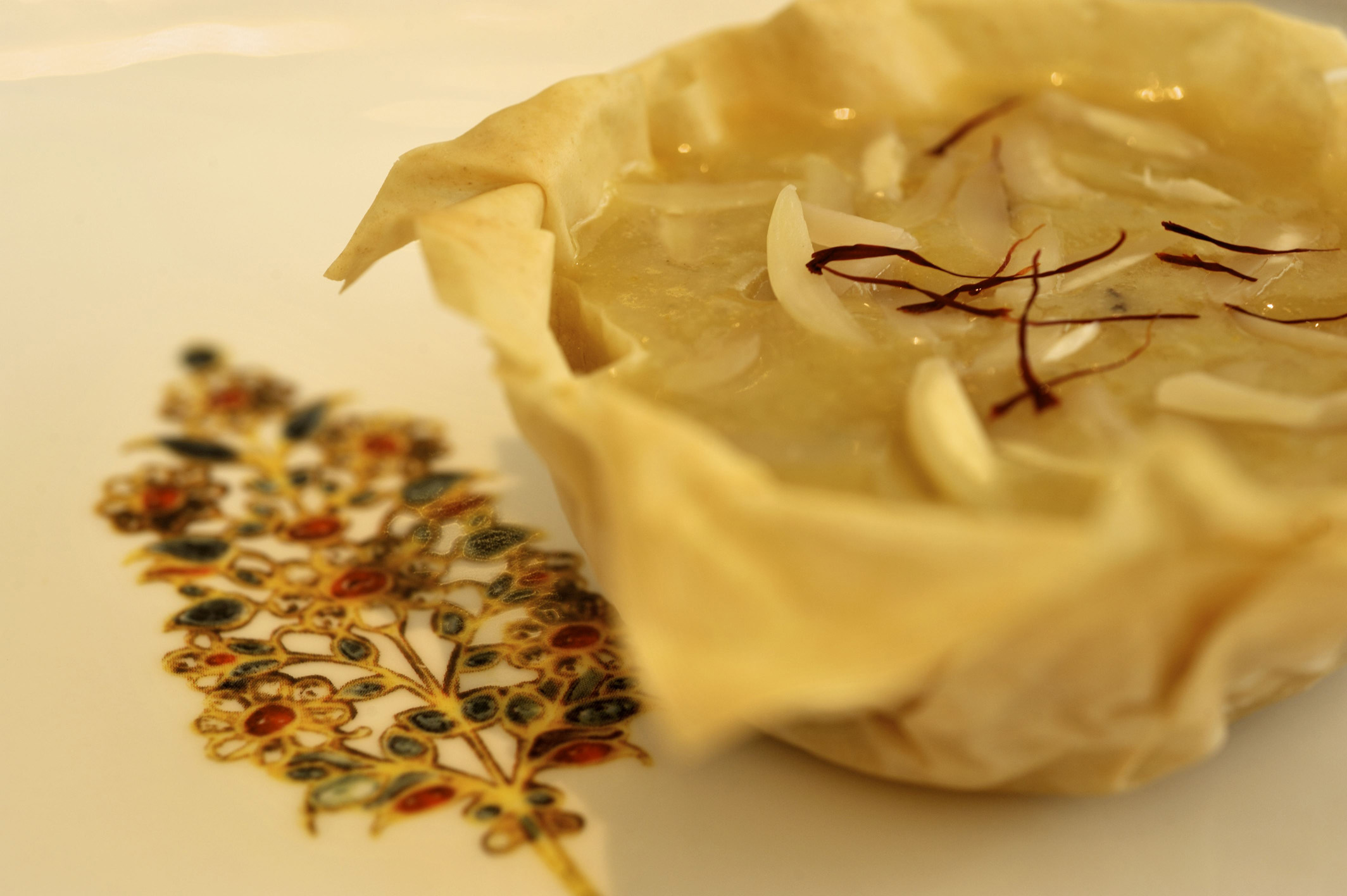
The selection of wines at this sophisticated restaurant ranges from Kendall Jackson Cabernet Sauvignons, Zinfandels and Pinot Noirs, to Stag’s Leap, Brand’s Laira, Sutter Home, Lapostolle, Saint Clair, and Dienhard Rieslings. The team is well trained to create special experiences that include pre-planned wine pairings and tasting menus.
Over the next four days of eating at innumerable restaurants and homes, we realize that Mandaar Sukhtankar’s respect for the time-tested flavours of Hyderabad is immense. He restricts his innovations to form and presentation, staying with tradition for the rest. At Aish, we eat the best Shikampuri Kebabs from the many we sample around the city – soft, succulent, with just enough resistance to contrast with the filling of yoghurt, followed by a superb Haleem. Dessert is a delicate Desi Gulab ke Kheer, made with wild roses, and a Kubani ka Meetha, presented as a tart. The apricots are soft, cooked to perfection, and they hold their shape as they are meant to, not dissolving into the purée that one often comes across. The menu at Aish explores all the classics: Dum ke Murgh; Nihari Gosht; Khatti Dal; Sufiani Pullao aur Timatar ka Kut, and offers the option of a Chef’s table, with prior notice. For vegetarian choices, it veers, interestingly, towards Andhra dishes like Palakuru Pappu.
Mandaar has traced a wide arc, from working at Las Meninas, the Spanish restaurant, then specializing in Italian cuisine, and now immersing himself in the flavours of Hyderabad. Training under Antonio Carluccio was a defining moment that sparked a love affair with Italian cuisine that is still going strong, and is unlikely to ever fade away. Mandaar opened and ran the iconic Italia, at The Park Bengaluru with such assurance and style that Carluccio referred to him as ‘my extension in the East’! He has managed to balance his European training with re-creating one of the subtlest cuisines that India has to offer, crossing from one world to the other, and back again, with ease, which has earned him many accolades, and placed him amongst the Celebrated Chefs of India.
There are chefs who cook brilliantly, unforgettably, and then become inarticulate when asked to speak about their creations. Then there are the rare ones like Mandaar, who are not just remarkable chefs, but raconteurs and writers, who can keep you engaged for hours with descriptions of their culinary journeys. During our stay, we hear many conversations deploring the blurring and loss of food traditions in Hyderabad. They draw attention to the importance of chefs like Mandaar – young, adventurous and gifted – who explore disappearing cuisines and re-instate them as modern classics, in modern settings.
Hyderabadi Renaissance appeared in Sommelier India Magazine, April-May 2014.
Image Credits: Chef Mandaar Sukhtankar

